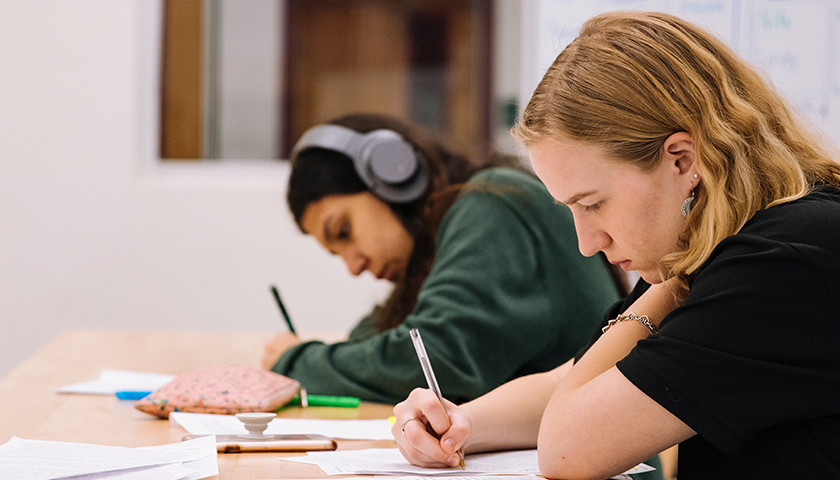by Julia Baumel & Peyton Lofton
The American K-12 education system has been failing too many students for too long. And the problem has only gotten worse amid pandemic-era school closures and remote learning.
Increasingly, parents are venting their frustration at local government bureaucracies and teachers’ unions that they believe have too often failed to put the interests of kids first — and some are voting with their feet.
Throughout Covid-19, traditional public school enrollment has dropped by 3.3% (1.45 million students) while charter school enrollment has increased by 7.1% year over year (237,000 students). Families are increasingly taking advantage of other non-traditional schooling options as well: according to the U.S. Census Bureau, the rate of homeschooling nationwide increased by 5.6 percentage points between April and October 2020.
The American people continue to support the existence of a robust public school system, and many parents are satisfied with the traditional public schools that serve their children according to several polls. But they’re also clearly open to alternatives and to bolder reform initiatives to give every kid a chance to get a good education. Elected officials need to be bold too, which is why House and Senate members as well as 2024 presidential contenders should rally behind an idea whose time has come:
America should build 10,000 new charter schools in the next 10 years, which would more than double the current amount.
Until about a decade ago, there was a bipartisan consensus that charter schools had an important role to play both in serving children who did not have access to good traditional public schools and in spurring innovative new practices to help prepare our kids for the future. In 2000, presidential candidate Al Gore endorsed tripling the number of charters in the U.S., and his opponent George W. Bush ran on a similar platform. Later, President Barack Obama and his education secretary Arne Duncan were both strong advocates for charter school expansion.
Unfortunately, in recent years, leaders of both parties have abandoned the charter school cause. While Republicans have prioritized voucher programs for private schools, Democrats have aligned with teachers unions to fight against charter expansion. In 2020, presidential candidates Bernie Sanders and Elizabeth Warren went as far as calling for an end to the funding of new charters.
However, support for charter schools is still strong among parents, with 79% of parents with school-aged children expressing their approval of charter schools in a recent poll.
And this overwhelming support is justified by the strong outcomes well-regulated charter schools have proven to produce, particularly in urban areas, for both their students and the surrounding school district. Several studies illustrate their impact.
A 2015 Stanford University study of 41 urban areas found that charter school students made learning gains equivalent to 40 additional days of instruction in math and 28 days in reading. Gains were even more significant for Black, Hispanic, and low-income students. A 2016 Brookings study found that Massachusetts charter school students performed better on the SAT and were 18 percentage points more likely to attend a four-year college than their public school peers on charter waitlists.
According to a Fordham Institute study, increased shares of Black and Hispanic students at charter schools was associated with improved achievement among all Black and Hispanic students in the district. An analysis conducted by Temple University professor Sarah A. Cordes found that students at New York City public schools performed better if there was a charter school nearby (within a mile) — the closer the charter, the better those students performed.
Understandably, demand for charter schools is high but policymakers have been artificially capping the supply. Over a million students are on charter school waiting lists, and according to the National Association for Public Charter Schools, about 5 million more students would attend charter schools if more were available.
Yet as of early 2021, 20 states cap the number of charter schools allowed to operate in their states. And five states — Montana, Nebraska, North Dakota, South Dakota, and Vermont — do not allow charter schools at all.
Further, the House version of the FY2022 budget would cut $40 million from the federal Charter Schools Program’s (CSP) $440 million budget. The CSP already represents less than 1% of federal education spending, and charters receive 33% less per pupil than traditional public schools.
Although much of the authorization and funding for charters occurs locally, there are steps Washington could take to help charter school supply meet demand. For example, the Department of Education should address this barrier by establishing additional grants through its Charter Schools Program for states that do not have caps on charter schools. Washington could also use Title I funding, which goes to schools in areas with high numbers or high percentages of children from low-income families, as leverage to force localities to be transparent in how or if they are funding charter schools equitably.
Ultimately, there is no single policy reform that would make it possible for America to open 10,000 new charters in the next decade. But the demand is there from kids and parents and so too is the need. It’s on our leaders to step up and meet it.
– – –
Julia Baumel is a Senior Policy Analyst and Peyton Lofton is a Policy Analyst at The New Center.




